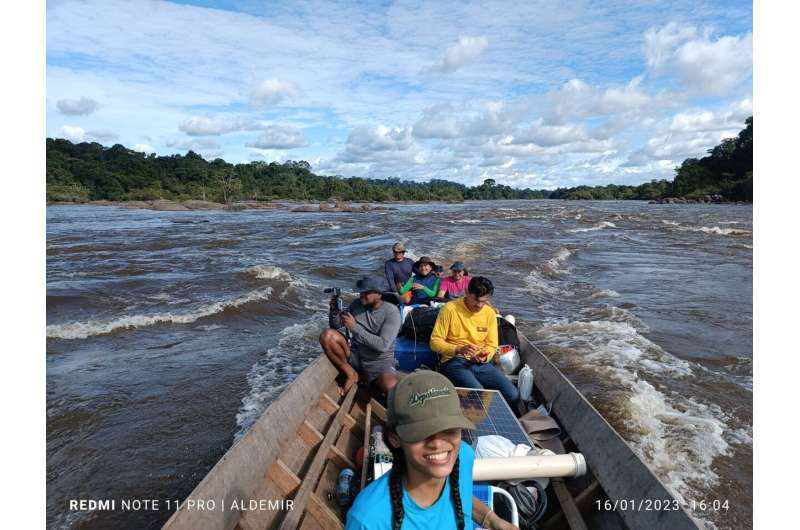This article has been reviewed according to Science X's editorial process and policies. Editors have highlighted the following attributes while ensuring the content's credibility:
fact-checked
peer-reviewed publication
trusted source
proofread
Study examines historical drought and flooding on the Amazon River

Extreme floods and severe droughts on the Amazon River have occurred more frequently in the last 40 years. Eight of the 12 most extreme floods in the 121-year streamflow record at Manaus, located on the Negro River, a tributary of the Amazon River, have occurred in just the last 14 years.
Natural climate variations, deforestation and anthropogenic climate change are all likely contributors to the recent Amazon River level extremes. Despite the rapid increase in severe flooding, a new paper by researchers from the U of A indicates recent floods and droughts in the Amazon River Basin may have not yet exceeded the range of natural hydroclimatic variability.
The American Meteorological Society published these recent findings by Daniela Granato-Souza, a post-doctoral student in geosciences, and David Stahle, a Distinguished Professor of geosciences, in a new paper titled, "Drought and flood extremes on the Amazon River and in northeast Brazil, 1790-1900."
Using tree-ring analysis to reconstruct rainfall totals in the eastern Amazon, along with historical documentary accounts of extreme flooding in Manaus and Santarem, Granato-Souza and Stahle found evidence indicating that Amazon River floods in 1859 and 1892 may have equaled or exceeded recent flooding.
The biggest difference between then and now, though, is the size of the population now living in the flood plain.
"There are millions of people residing in Manaus, the most populous city in northern Brazil, so there is a socioeconomic concern in these regions," noted Granato-Souza. "Usually, poorer people are seen living in risk areas, and with each flood they suffer the consequences of loss and illness. There is a 'normal' for the maximum level that the river reaches, but the most extreme floods exceed this threshold, and studies have shown that this is intensifying."
Granato-Souza added that while they found the recent extreme floods weren't unprecedented, examining the scale of past flooding provides a framework for imagining and anticipating the environmental and socioeconomic consequences of future floods.
And they would likely be devastating for a population living in high-risk areas.
The tree-ring collections used in this research came from the Rio Paru, a tributary of the Amazon near the recent discovery site of the tallest trees in the Brazilian Amazon.
Descriptions of the giant trees in the remote and unspoiled Rio Paru drainage has captivated public interest in Brazil and abroad. Stahle and Granato-Souza are working with environmental scientists in Brazil, including Diego da Silva with the Federal Institute of Amapa, Robson Borges with Amapa State University and Eric Gorgens with the Federal University of the Jequitinhonha and Mucuri Valleys, to help answer often-asked questions concerning the age, growth rate, disturbance history and the climate sensitivity of these tropical hardwoods.
The research is published in the Journal of Climate.
More information: Daniela Granato-Souza et al, Drought and flood extremes on the Amazon River and in northeast Brazil, 1790-1900, Journal of Climate (2023). DOI: 10.1175/JCLI-D-23-0146.1
Journal information: Journal of Climate
Provided by University of Arkansas




















